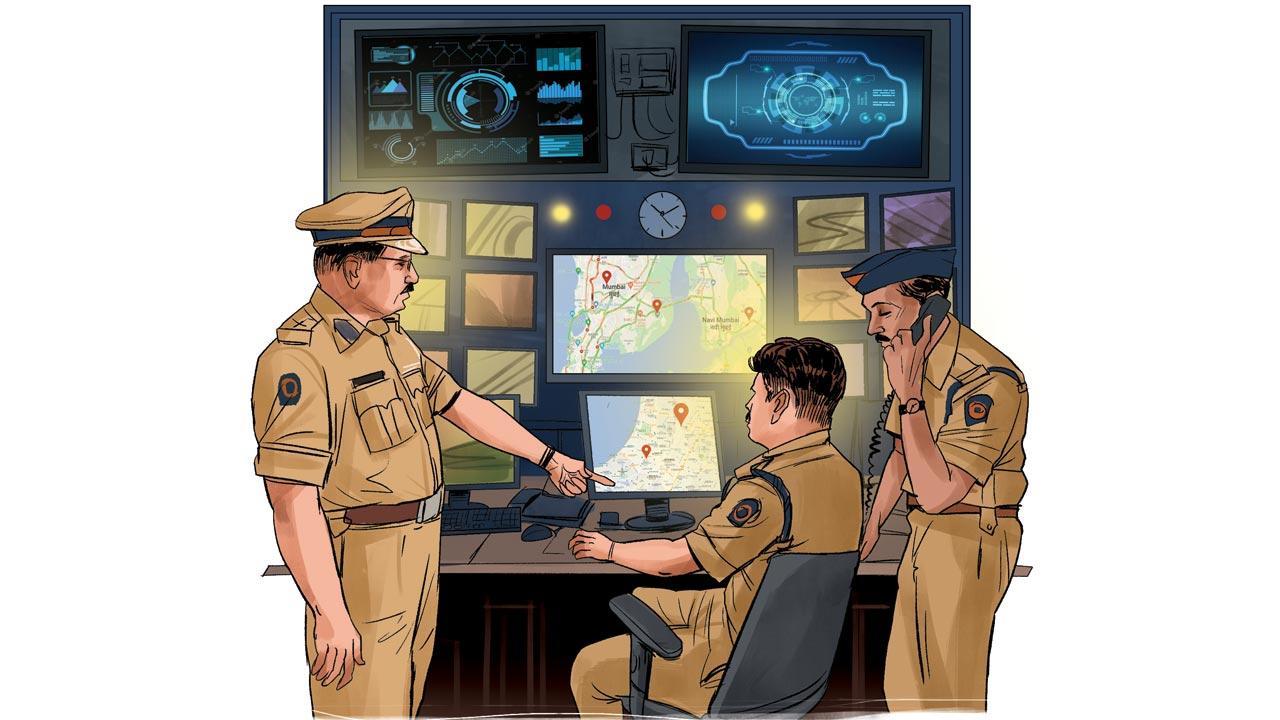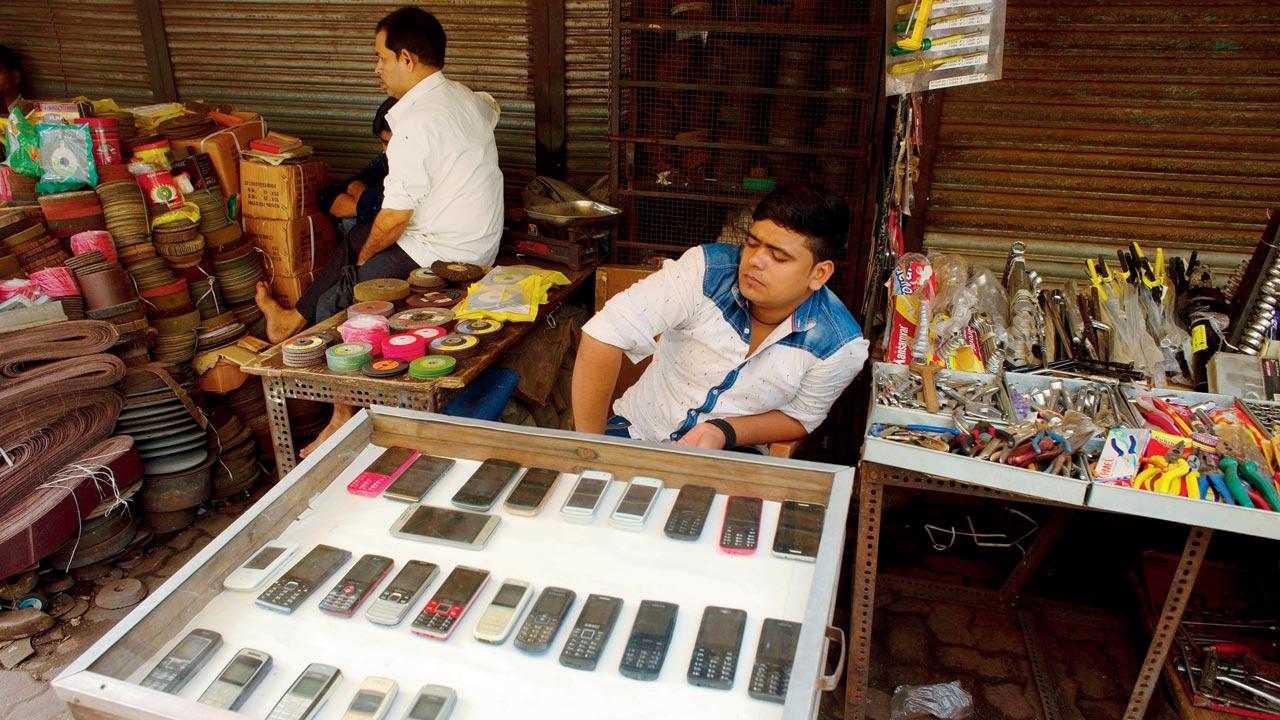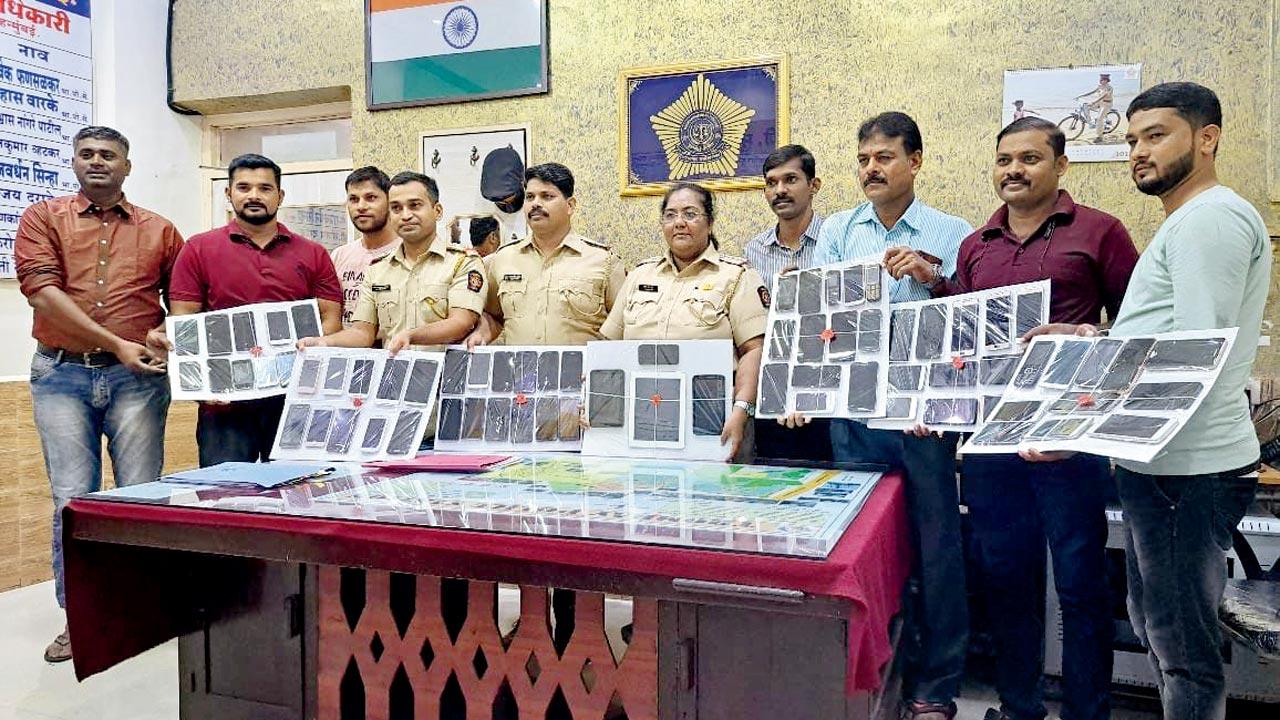Why the Centre’s new track-and-block project is making it harder for your stolen phones, called ‘kauwwas’, to vanish into the open markets of Bangladesh and Nepal

The nerve centre of the Central Equipment Identity Register (CEIR) project, situated in the Mumbai Police headquarters, is responsible for tracing and blocking stolen mobile phones. Illustration/Uday Mohite
In one corner of the Mumbai Police control room, three constables work silently at their terminals, tapping away at their keyboards. This section is located away from the hustle and bustle of the main control room, where calls are fielded from all over the city, and information relayed to the police station or authority concerned. This team only works on tracing mobile phones that are reported lost or stolen.
ADVERTISEMENT
In October last year, Mumbai was selected as one of the eight cities across the country to implement the Central Equipment Identity Register (CEIR) project on a pilot basis. An initiative of the Central government’s Department of Telecommunications, CEIR was introduced in order to tackle the ever-growing monster that the mobile phone black market has become. In 2021, 51,030 phones were reported stolen in Mumbai; the number stood at 39,819 in 2020.
While the police have for years been tracking stolen mobile phones using their IMEI (International Mobile Equipment Identity) numbers, in collaboration with mobile and SIM card service providers, CEIR seeks to take it one step further. Now, once the IMEI number of a phone reported lost or stolen is entered in the CEIR, the phone in question is blocked immediately, rendering it unusable. As a result, thieves can no longer sell them further in the black market.
 Hundreds of stolen mobile phones are equipped with new IMEI numbers and resold on a daily basis. Many of these phones are smuggled across the border to Nepal and Bangladesh. Pic/Getty Images
Hundreds of stolen mobile phones are equipped with new IMEI numbers and resold on a daily basis. Many of these phones are smuggled across the border to Nepal and Bangladesh. Pic/Getty Images
The need for a dedicated technology for phone thefts, has for long been on the minds of law-enforcement agencies.
One of the more eye-opening cases that exposed the sheer scope of what was once assumed to be a ‘petty theft’, came to light in August last year.
According to Assistant Police Inspector Kedar Waychal, the Trombay police received a complaint about a stolen iPhone. An FIR was registered, and on the basis of the IMEI as well as cellular location mapping, the investigating team zeroed in on one Abdul Salim Sheikh, a repeat offender who confessed to having stolen the phone.
Sheikh said he had delivered it to Farha Jalianwala, a resident of Trombay. When the police raided her house, they recovered 72 stolen phones, indicating that this was a bigger racket than they had earlier thought.
 In an investigation conducted in August last year, the Trombay police recovered 131 stolen phones and found transactions amounting to R2 crore over two years in the bank account of one of the arrested accused
In an investigation conducted in August last year, the Trombay police recovered 131 stolen phones and found transactions amounting to R2 crore over two years in the bank account of one of the arrested accused
The team, headed by Waychal and Police Sub-inspector Sharad Nanekar, started a deeper investigation into the matter, and recovered 59 more phones.
“We realised that Sheikh was just one cog in a well-oiled machine. People like Sheikh, who would do the actual stealing, were called ‘machines’ in the gang, while stolen phones are known as ‘kauwwa’ [the Hindi word for crow]. The phones would be received by Shah Rukh Pathan, an autorickshaw driver who would hand them over to Farha and get paid in cash after they were sold in the black market,” says Waychal.
Further investigations revealed that the mobile phone theft racket even had a money laundering arm.
Through weeks of dogged chasing of leads, police constables Sanjay Sawant, Suhas Kasar, Ganesh Survase, Swapnil Patil, Vinod Baviskar and Chhaya Walke found that Pathan would take the cash to Sahil Jalianwala, Farha’s husband, who worked at a managerial post with a private firm. “Sahil would routinely offer to help his subordinates with cash, saying he had a lot of extra cash on hand, and they could simply take it from him after transferring the same amount via netbanking or UPI. All the cash that Sahil and Farha got from their clients was disbursed among Sahil’s juniors,” adds Waychal.
When they examined his bank account, they found transactions amounting to R2 crore that had taken place over a period of two years.
At the CEIR nerve centre in Mumbai, the three constables track the status of hundreds of stolen mobile phones that are fed into the portal every day. All police stations have been given a log in ID to the portal, so that they can enter the details from the complaints they receive. The details are immediately forwarded to the manufacturer, as well as all the SIM card service providers, who cater to the city’s residents.
On a daily basis, the CEIR team makes a log of the blocked devices. Further, if someone inserts a new SIM card into the device to try and use it, the SIM card company concerned immediately gets an alert, along with the location of the device. This is forwarded to the police in real time, which increases the chances of recovery and arresting the accused.
“Citizens can also enter the details of their stolen phones using the website; all police stations also follow this policy as a rule. In the last six months alone, we have traced a total of 11,056 stolen handsets, while 38,667 phones have been blocked,” says Deputy Commissioner of Police (Preventive) Amogh Gaonkar, Mumbai Crime Branch, who oversees the operations of the portal in Mumbai.
While blocking the handsets is a quick process, the priority is always given to tracing the phones first.
Just a week ago, a lawyer approached the MRA Marg police to report that his phone had been stolen while he was on his way to CSMT from Siddharth College in Fort. The phone’s IMEI number was immediately entered into the CEIR, and it was located in the same area as the ongoing Metro Rail construction near the college. A police team was rushed to the spot. Since the phone was still switched on, there was a high possibility of recovering it.
“We made exhaustive inquiries in the area, but found no leads. Finally, we turned to the CCTV feed and saw a security guard pick up the phone from the ground. We traced and questioned him, and he led us underground into the under-construction subway station. He had hidden it there thinking it would be untraceable if he hid it there,” recalls an officer with the MRA Marg police station.
It was in 2015 that the police noticed that IMEI tracking to trace phones, was no longer working as effectively as it used to. Scores of repeat offenders were picked up and informants tapped. The police discovered that their worst nightmare had come true: criminals had found a way of changing IMEI numbers. Using devices called “flashers”, available for as less as R10,000, those experienced in mobile phone repair would erase a phone’s IMEI number and replace it with a new one. As time passed, even flasher devices went extinct. Today, you can simply connect a phone to a computer and use a flasher software, easily available on the internet. A simple Google search reveals scores of tutorials, both text and video, on how to use the flasher software, all of which, ironically, come with a disclaimer saying, “it may be illegal to do this in your country”.
Even the clientele of mobile phone thieves has changed. While earlier they would sell the phones to retailers, who would in turn sell them as second-hand phones, now, the racket has gone international.
Waychal’s team discovered this while trying to track down two accused in the case, who are still wanted. These two men would pick up the mobile phones from Farha and Sahil, and smuggle them across the border into countries like Bangladesh and Nepal, where they would be injected back into the open market. Once the phones are out of India’s jurisdiction, recovering them becomes next to impossible, and this is something that mobile phone thieves seem to have realised.
The Crime Branch’s Unit VI, too, uncovered this aspect when they were probing a similar case last year. When one of their constables received a tip off about a cross-border mobile phone racket, an investigation was initiated and the Unit VI went on to arrest 21 people over a period of two months.
“The accused had a tie-up with agents based at the Nepal and Bangladesh borders. These agents have a massive racket, primarily helping criminals wanted in India to slip into Nepal or Bangladesh to lie low until matters cool down. These same agents would pick up consignments of stolen phones and deliver them across the border,” says a Crime Branch officer who was part of the investigation.
The smuggling process, too, is quick. In one instance, the police started tracing a phone that was reported stolen in Mumbra. The same day, it travelled to Tilak Nagar and then to Vashi, where it was switched off. When it was switched on the next morning, it was in Bangladesh.
While phones in pristine or decent condition fetch a good price in the black market, even damaged phones are in high demand for one simple reason: their IMEI numbers. If a phone is too damaged to be resold, its IMEI number is noted down and entered into a database, after which it is stripped for parts. The database is used every time the gangs need a new IMEI number to assign to a stolen phone after its original one is ‘flashed’ out.
“The good news,” an officer says, “is that if every phone, damaged or not, is reported stolen through CEIR, the gangs will eventually run out of IMEI numbers to use. What we are doing is hitting them where it hurts. If they can’t sell the phones, what is the point of stealing them?”
The only question that the police haven’t been able to find an answer to, yet, is why phones are called kauwwas. “Even we were curious about the origins. While interrogating some recently arrested accused, we learnt that policemen, earlier called ‘mamu’ are now known as ‘hathi’ or elephant.
Nobody seems to know why!” smiles Waychal.
38,667
No. of stolen handsets disabled through the Central Equipment Identity Register project
 Subscribe today by clicking the link and stay updated with the latest news!" Click here!
Subscribe today by clicking the link and stay updated with the latest news!" Click here!







